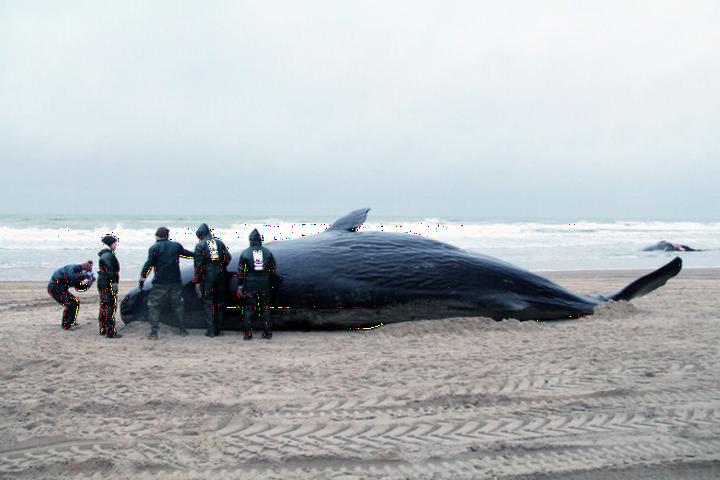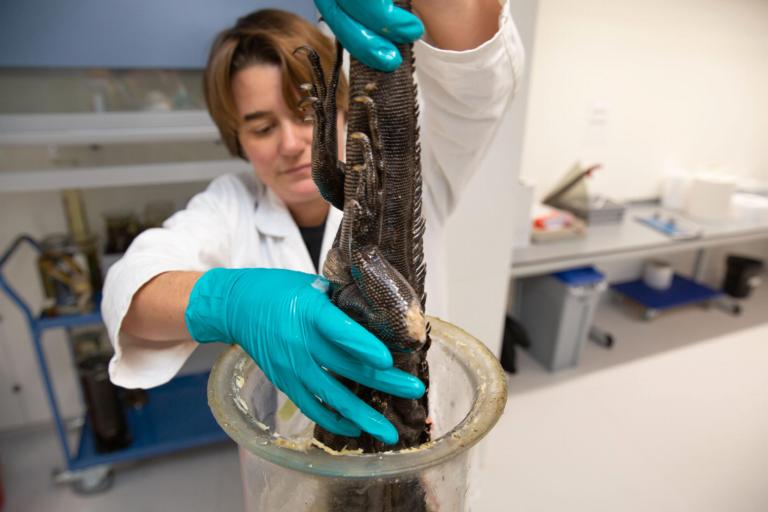
I manage the reptiles, amphibians and fish collections at Naturalis. These collections contain hundreds of thousands of specimens and are frequently used by scientists around the world. I mainly focus on the management of these collections by answering questions and welcoming researchers who come to study the collections. Another important part of my work is the digitalization of all collection items and making the history of the objects and the stories about them accessible.
Keywords
reptiles, amphibians, fish, herpetology, liquid collections, natural history
Thecollections
These collections are largely kept in jars containing alcohol. A smaller part of the collections is kept as dry specimens, such as mounted crocodiles, tortoise shells, dry shark and ray eggs, but also skins and individual bones. All of these objects can be used for research to answer questions about the animal species, the distribution of these animals, and their living environment. Important parts of these collections are, for example, the 19th-century fish of Bleeker, a unique collection of Japanese animals from Von Siebold, a large collection of reptiles and amphibians collected in the Amazon, and an unusual collection with cichlids from Lake Victoria in Tanzania.
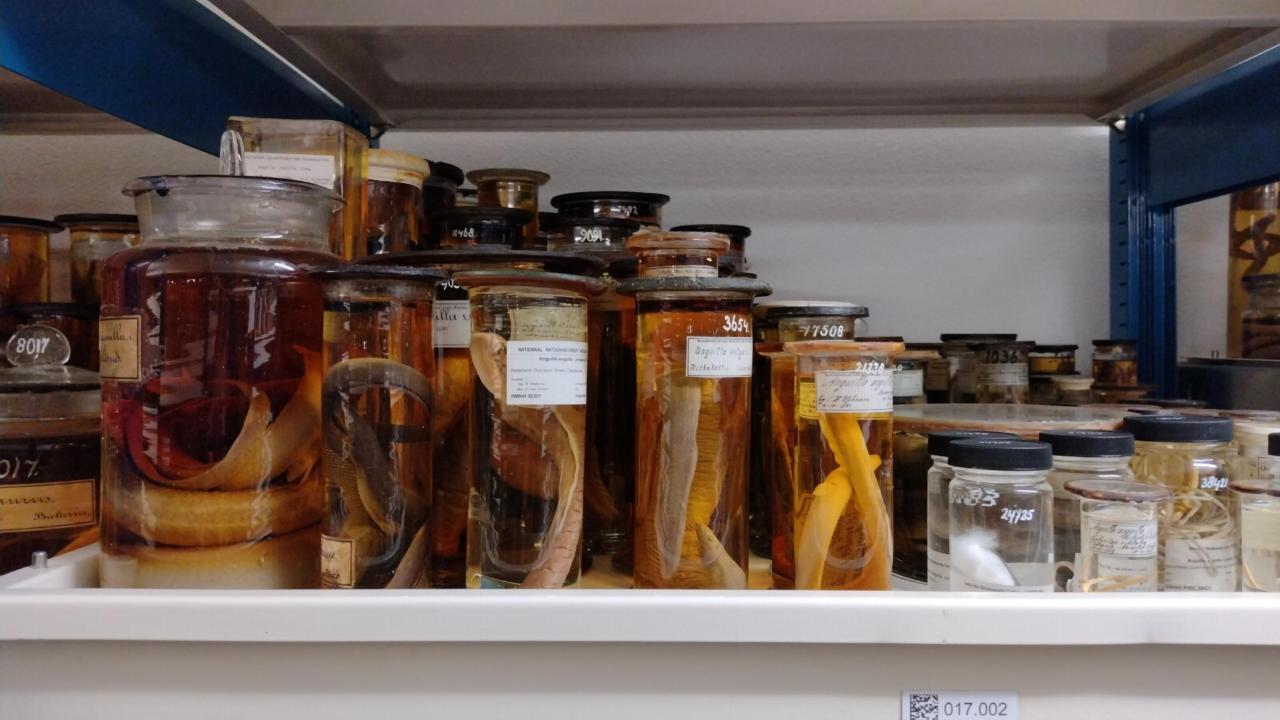
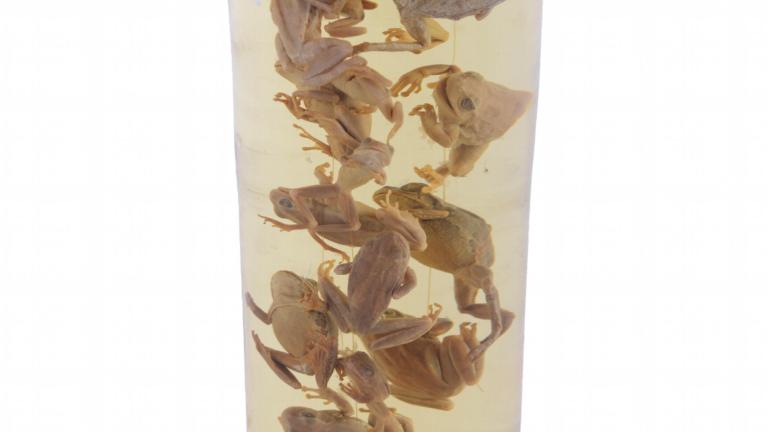
Importantpublications
Nomenclatural and morphological notes on the rare agamid lizard Pseudocophotis sumatrana (Hubrecht, 1879) (Squamata: Agamidae: Draconidae). Denzer et al. The Raffles Bulletin of Zoology 2021. 69: 448-462.
Selection on Phalanx Development in the Evolution of the Bird Wing. De Bakker et al. Mol Biol Evol. 2021; 38(10): 4222-4237.
Testing to Determine Allowable Vibration Limits at a Natural-History Museum in the Netherlands. W. (Bill) Wei and E. Dondorp; APT Bulletin: The Journal of Preservation Technology; Vol. 51, No. 4, Special Issue: Mitigating Vibration Damage 2020, 19-26.
Digit loss in archosaur evolution and the interplay between selection and constraints. De Bakker et al. Nature. 2013 Aug 22; 500(7463): 445-8.
Annotated catalogue of acrodont lizard types in the collection of the Naturalis Biodiverstity Center (Squamata: Agamidae, Chamaeleonidae): Dondorp & Denzer; Zootaxa, 2024 Jan 18; 5403(1), 65–79.
Lyriocephalus scutatus (Linnaeus, 1758). Anmerkungen zur Nomenklatur und möglichem Typusmaterial (Notes on nomenclature and potential type material): Dondorp & Denzer; SAURIA, Apr 2023; 45(1)
Notes on the type series of the Javan Spitting Cobra, Naja sputatrix Boie, 1827, and designation of a lectotype for Naja tripudians sondaica Schlegel, 1844: Denzer, W., Dondorp, E., Kaiser, H. & Wüster, W., Aug. 2025, Zootaxa, 5679 (4), 585–599.
In themedia
On December 13, 2021, a large ocean sunfish washed up on the beach of Ameland. After being kept in a freezer for almost 10 months, it was defrosted in September 2022 and mounted for the scientific collection of Naturalis. The organs and parasites of the animal have also been conserved for study.
- Hart van Nederland: Maanvis krijgt tweede leven [Ocean sunfish gets a second life].
- NOS: Maanvis van 400 kilo opgezet in Naturalis [400 kg Ocean sunfish mounted in Naturalis.
- Unity: Maanvis wordt opgezet [Ocean sunfish is mounted]
- I am also the photographer of many of the most remarkable items in the collection.
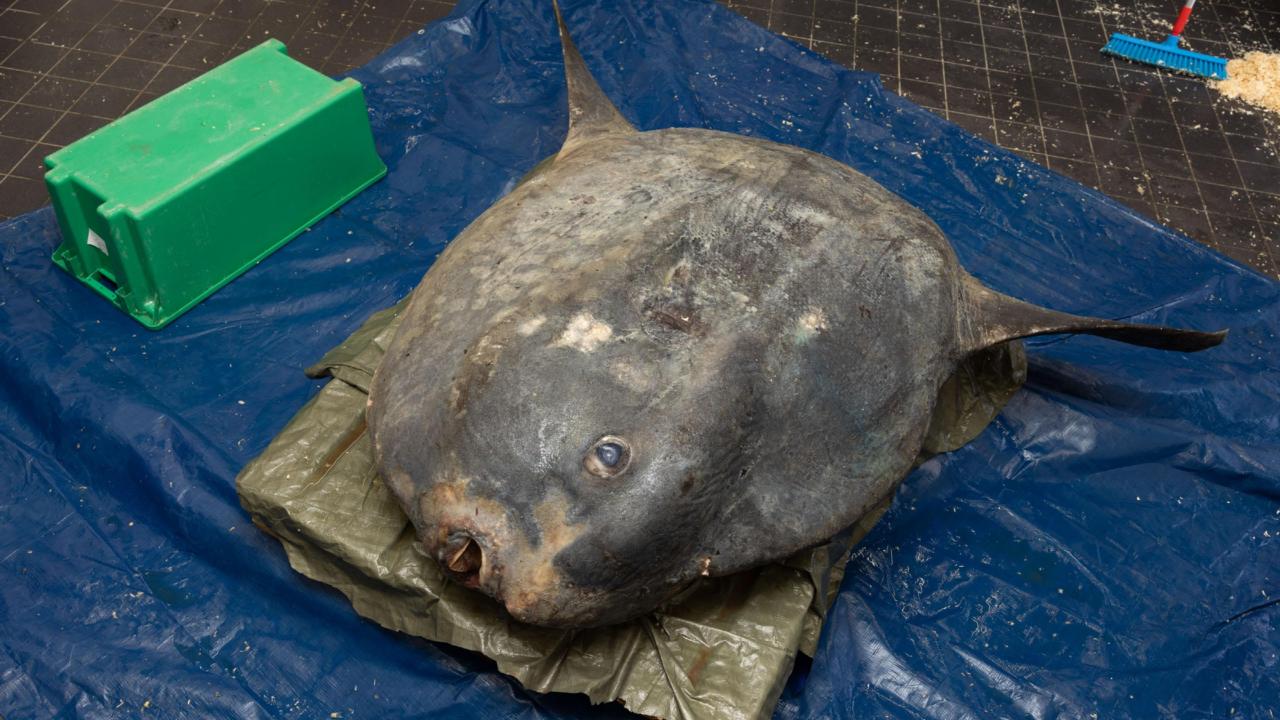
Projects
